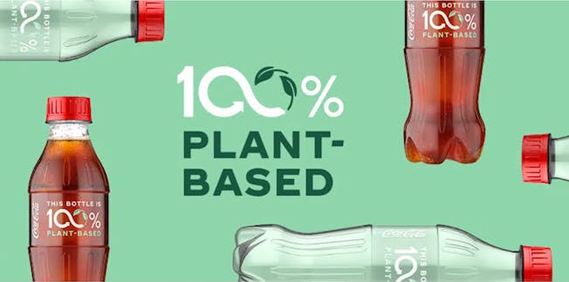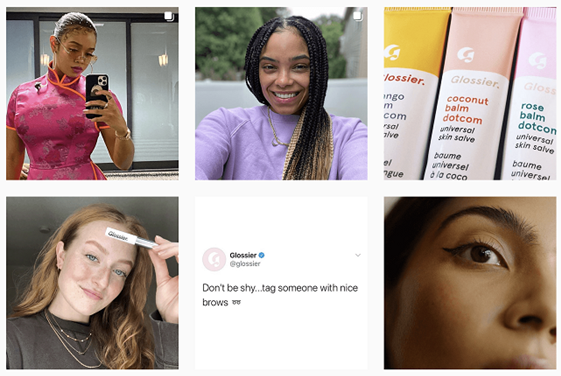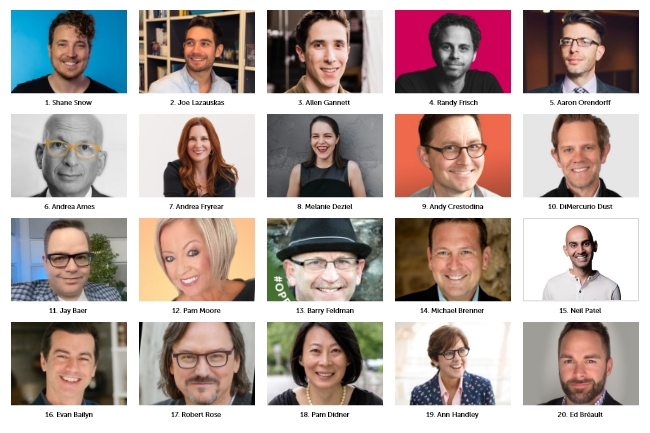Diversity at all levels of any business – the marketing department included – is a key indicator of business success and productivity. Various benefits can be seen in participation in inventory and financial performance, investment and retention, and customer acquisition and loyalty.
It’s not a nice-to-have, it’s a necessity. Many studies have shown that more diverse organizations work better than less diverse ones.
Having a diverse culture and inclusion is the result of policies and procedures that empower, support and support team members who have received little or none of this before. It focuses on results, not goals. In this case, actions must precede words.
Marketing is about trust. 46% of consumers would pay more for products and services from brands they trust, according to Salsify research. With such a focus on building trust, you’ll also want to demonstrate diversity in your advertising and promotion.
Why? Almost 60% of customers will trust you more if you use inclusive advertising, according to a Facebook advertising study.
However, it is important to note that simply adding people from different ethnicities to your content will not achieve this. The “face and festival” approach, where the market includes different faces and gives pride to certain holidays is a recipe for disaster. To avoid this, you need to have a different team.
Customers want advertising and promotions that represent them and their needs and interests. They don’t take it for granted. They look for evidence that the representation is true and get angry if they believe it is not. This is the beginning of diversity, equity, and inclusion (DEI) for the retail industry. It explains the basic concepts and suggests steps you can take.
Why is Diversity Important in Marketing?
Not all consumers fit one specific profile, which is why your marketing strategies need to reflect this. What may confuse some businesses is that this does not mean marketers aren’t allowed to have a defined target audience.
Just because a brand is targeting a specific group of people does not mean any person outside of the desired audience can’t be interested in a company’s products or services.
Diversity is even more important in the wake of the ongoing pandemic that has created uncertainty for consumers. Simple necessities are now a customer’s main priority as is looking for a sense of belonging and trust from the brands they’re shopping with. With your own company needing to take this into consideration, there are many consumer trends in 2023 that can be followed to better include all people in a welcoming, safe environment.
Trends and Statistics on Consumer Behavior
At the end of the day, the aim of any marketing campaign is to appeal to the end users. This means that it needs to be diverse and inclusive, showing that the brand is about more than just a select few. It’s about building a community.
On that note, let’s take a look at a few consumer trends that need to be considered for your next campaign:
- 83% of millennials prefer to buy from companies that align with their beliefs and values
- 71% would pay more for a product if they knew a portion of the proceeds would go to charity
- 61% of consumers think that the difference in sales experience is very important
- 38% can trust brands that respond well to diversity in their markets
What is Consumer Diversity?
Customer diversity is an inescapable reality for most businesses. It refers to the race, gender, sexual orientation, and other personal factors relating to consumers. Brands that recognize it make every effort to understand the diversity of their audience and adapt their strategies to the needs of their customers.
In this diverse era, inclusion is an increasingly important factor in growing and serving as a risk mitigation strategy for businesses. To successfully target different customers, companies need to understand their target audience and put customers at the forefront of their strategy.
The 3 Benefits of Diversity
1. Growth: Millennials are the generation that values inclusion the most and is influenced by diversity and inclusion. And Gen Z is on the fast track to being more diverse than the generation immediately before them. The younger generation is conscientious consumers who are willing to promote brands that create a positive experience for different customers and avoid and block others from groups with a bad reputation for diversity.
2. Inclusivity: These days, you don’t have to be a global brand to reach a diverse clientele. Everyone is different in one way or another, and accepting those differences is good for business. If you continue to pursue a select group, you will lose the favor of the minority. Different marketing strategies show your customers that you care about them, no matter how different they may be from other customers.
3. Risk Mitigation: From sole trading, diversification can be a risk mitigation method. Having a diverse customer base protects your business from the effects of economic challenges in one customer segment. While it’s good to focus when you’re thinking about a prospect, hyper-focus can cause you to use less of your potential.
Inclusivity In Marketing
Inclusive marketing considers diversity in all its forms. This includes age, appearance, race, and gender identity. Along with language, socioeconomic status, religion/spirituality, and physical/mental abilities.
It’s about understanding that your audience is made up of different groups. It is also about creating marketing campaigns that will appeal to all people from all walks of life. Inclusive marketing also recognizes that each individual has multiple identities. It shows real people in the real world.
Additional media coverage will reach all members, including the marginalized and marginalized. But they have to do it in a way that shatters illusions. They will tell your audience that you see them and understand them. By going above and beyond, truly inclusive marketing will amplify the voices of underrepresented people.
Embracing diversity in marketing and advertising isn’t just about including different people in your photos. It’s not about ticking different boxes. It’s about thinking and connecting with your audience. As people, we do this by getting to know each other on a personal level. In inclusive marketing, it is the same but from the level of the brand to the market.
Inclusivity in Metaverse
When it comes to the impending metaverse boom, there are a few things brands need to consider when it comes to building these virtual worlds. This includes three things: prioritize inclusiveness, learn basic innovation, and embrace cooperation.
1. Inclusiveness from the beginning
We need to make sure that inclusiveness is front and center and not an impending nightmare in the metaverse.
Greater inclusion is a natural advantage in virtual environments where a person’s location, gender, physical characteristics, or personal circumstances are less important than his or her ideas.
2. Basic initiatives
One way to ensure that the virtual environment is fully representative of the people who use it is to embark on the existing space of those who have been innovating from the beginning. Such basic initiatives can be learned and highlighted to the needs of those who are vulnerable to marginalization as the metaverse grows.
3. Collaborate to create a metaverse
No society, country or culture can build an honest and inclusive metaverse. The global IT community therefore needs to unite with the communities it serves to support open, secure, and reliable virtual environments. We now have the opportunity to reflect on and build the kind of metaverse we want, based on extensive experience and research.
5 Future Trends in Marketing

First things first, your brand will need to understand the question: what is the difference between inclusivity and diversity? Defined by ADP’s chief diversity and social responsibility officer Rita Mitjans, “Diversity is the ‘what’; inclusion is the ‘how’”. This means that inclusivity is defined by brands creating an environment where their content reflects the diverse identity that a company is serving, while diversity marketing is the actual makeup of the group being represented.
When your brand first goes about creating a diversity and inclusion strategy, your company should define its audience and the people that make up the group, followed by creating a voice for this specific group of people. This method is becoming highly successful amongst consumers and below is a compiled list of consumer behavior trends to look out for in 2023 that help to facilitate this:
1. Empathizing: Consumers are looking for brands that relate to their values and beliefs. Companies that empathize with their target audience are likely to develop loyal customers and potentially generate more conversions.
Back-end management restaurant assistant Resy took to an email campaign to help consumers empathize with their restaurant clientele. The email included a statement about all NYC restaurants suffering due to the pandemic and how Resy was setting up a delivery service to help keep these businesses alive. This example can be considered a good use of inclusivity and diversity as Resy defined its clientele clearly and used their platform to extend their clientele’s voice to the intended audience.
2. Value Spending: If there’s one trend the pandemic of 2020 brought to light, it was the need for consumers to partner with a brand that’s seeking to do “more”. Brands that are not just interested in doing business, but also those interested in changing the world for the better.
As a brand, Coca-Cola places great importance on sustainability. The main areas are climate, packaging and agriculture, as well as water management and product quality.
Their mission is “a world without waste”, intending to collect and recycle every bottle, making their packaging 100% recyclable and replacing all the water used to make their drinks in the environment to ensure safety.
They aim to reduce their carbon footprint by 25% by 2030. In 2021, Coca-Cola unveiled its first bottle made from 100% plant-based plastic.

3. Inclusion: A large trend growing in popularity is companies including their audience in their content. Consumers are looking to build relationships, so it’s important for businesses to find engaging ways to communicate and include their audience in their marketing strategies.
Makeup brand Glossier has worked at incorporating a diverse range of their consumers into their Instagram posts. Scrolling through Glossier’s feed, consumers are likely to stumble on a post with a woman that not only resembles herself, but shows how Glossier’s makeup is made for everyone.

4. Personalization: People are looking for personalized experiences, like the aforementioned Coke bottle, while they are shopping and this trend will continue to grow with consumers’ needs. Cosmetics company Sephora recently started offering quizzes to their customers with personalized results, meaning that no matter what someone’s skin type could possibly be, Sephora would produce a customized solution for any person that wanted it.
5. Trust In Others: Any consumer with an online presence is likely to research products, read reviews, and look up to influencers that may have an opinion on a brand. Companies putting part of their budget into influencer marketing is likely to become more prevalent in 2022 as this market becomes more important.
Brands who are collaborating with a diverse range of influencers will help themselves reach an extended group of consumers, who already trust the messenger. People are looking to influencers as reliable sources of information as they are becoming increasingly untrusting of companies, and conventional methods of advertising.
Benefits Of Diversity And Inclusion In Marketing
Diversity marketing is important in today’s marketing world.
In the past, it was easy to avoid confusion and critical thinking was necessary to be inclusive because the audience did not expect or want their brands to represent different brands. Now everything has changed.
When people from different cultures and countries feel that your brand represents them, they are more likely to connect with you.
Investing in different markets also helps you expand your reach. By joining groups, your new audience will help increase your brand visibility and spread awareness of your product or service.
Let’s look at some other benefits:
1. Growth: Millennials are the generation that values inclusion the most and is influenced by diversity and inclusion. And Gen Z is on the fast track to being more diverse than the generation immediately before them. The younger generation is conscientious consumers who are willing to promote brands that create a positive experience for different customers and avoid and block others from groups with a bad reputation for diversity.
2. Inclusivity: These days, you don’t have to be a global brand to reach a diverse clientele. Everyone is different in one way or another, and accepting those differences is good for business. If you continue to pursue a select group, you will lose the favor of the minority. Different marketing strategies show your customers that you care about them, no matter how different they may be from other customers.
3. Risk Mitigation: From sole trading, diversification can be a risk mitigation method. Having a diverse customer base protects your business from the effects of economic challenges in one customer segment. While it’s good to focus when you’re thinking about a prospect, hyper-focus can cause you to use less of your potential.
Examples of Diversity and Inclusion in Marketing
In the last five to ten years, many brands have created different and more accurate ideas in their marketing campaigns to tell great stories and address important societal problems. Let’s look at some examples.
“Equality” by Nike
Nike’s “Equality” campaign features some of the brand’s most famous athletes, including Serena Williams, LeBron James and Kevin Durant. His message is simple: “The value will be overshadowed.” The idea is to encourage people to be themselves, play fair and act against discrimination.
In the ad, actor Michael B. Jordan sings a powerful song about equality ending with “If we can be equal here, we can be equal everywhere”. Singer Alicia Keys performs a new version of Sam Cooke’s “Change Is Gonna Come”.
“Belong Anywhere” by Airbnb
Airbnb’s 2019 “Belong Anywhere” list celebrates cultures around the world by showcasing different hosts, cuisines and cities. Airbnb’s mission is to create a world that anyone can access anywhere. Through this campaign, the brand shows that everyone has a place in the world, regardless of where they come from or what they look like.
Note that in addition to different and inclusive advertising, these ads have one thing in common: they use the power of video marketing to convey their message and reach their audience. There’s a reason 86% of consumers use video as a marketing tool.
Conclusion
As 2023 approaches, businesses will be studying consumer behavior closely to provide consumers with the best possible shopping experience. People are looking for a more “human” touch when it comes to shopping online, also a concept only set to keep growing, and businesses will need to evolve and better create a voice for themselves, as well as emphasize the need for diversity and inclusive marketing methods. It will be the companies that adapt and define their audience, who create a voice that represents their consumers that will be the ones leading industries in the years to come.





Tell us your thoughts in the comments